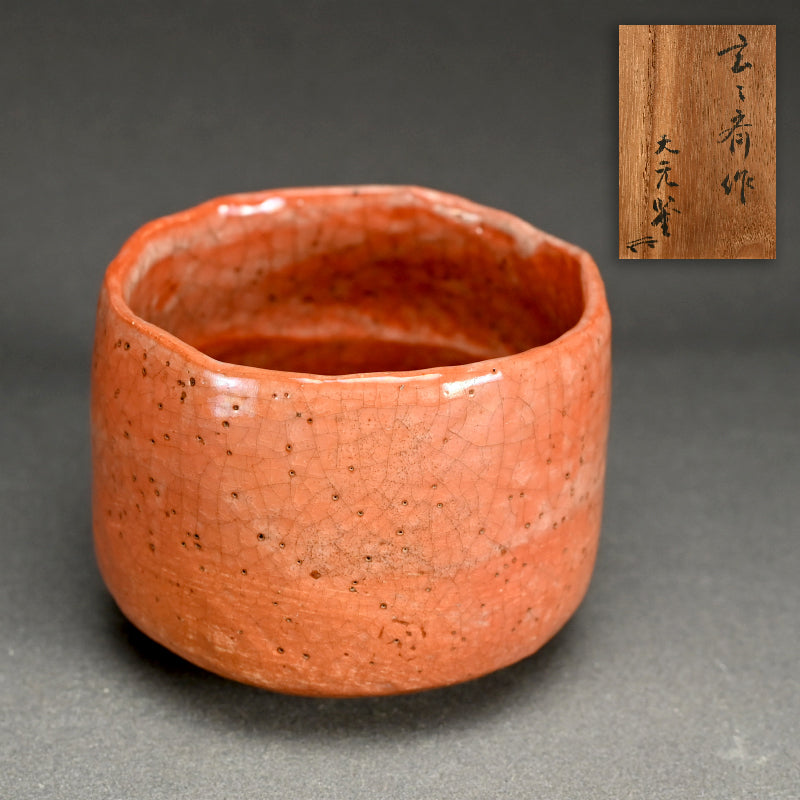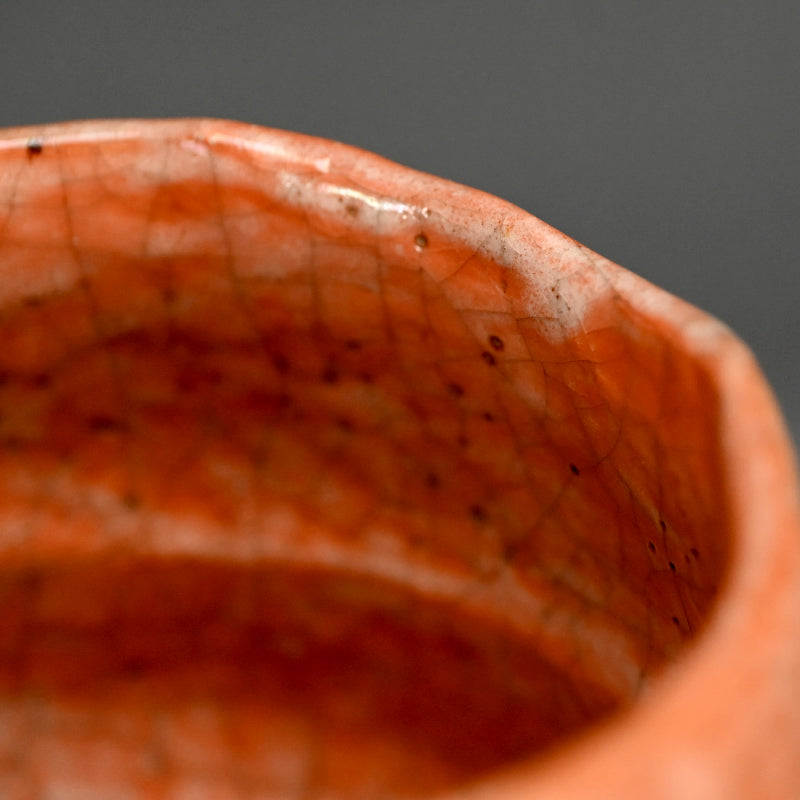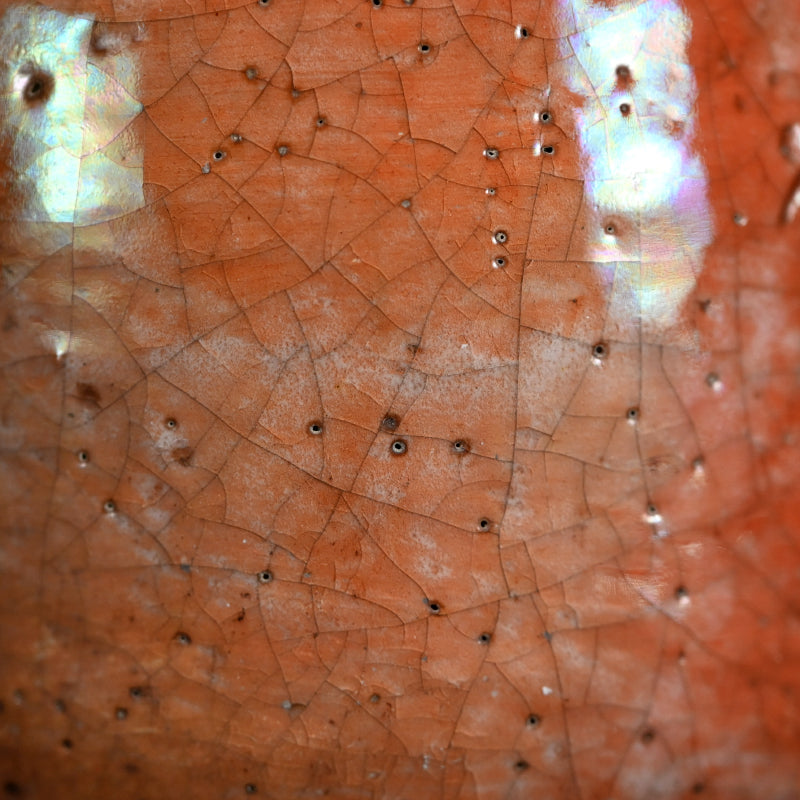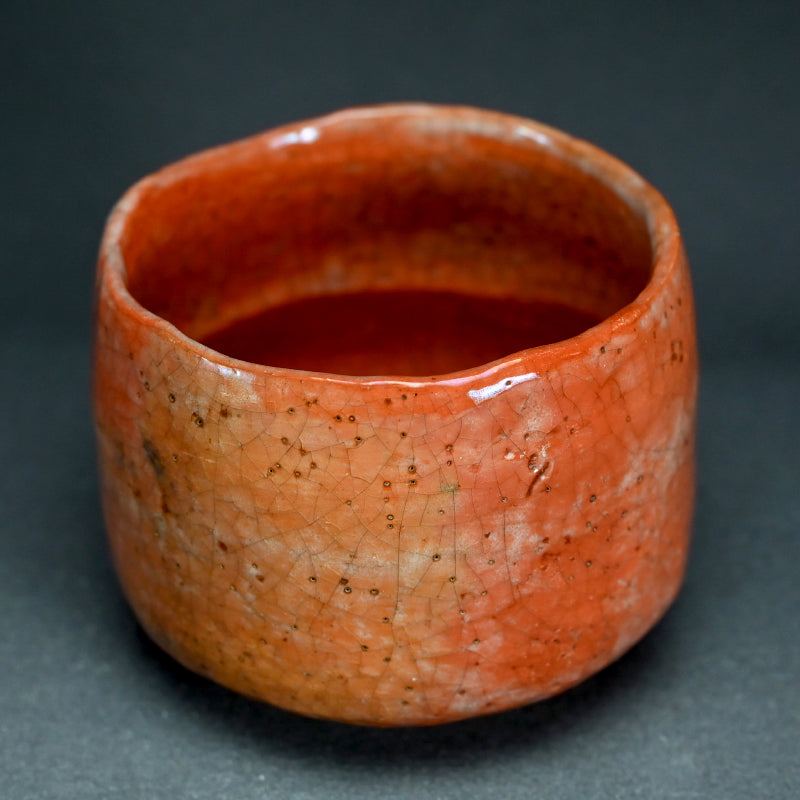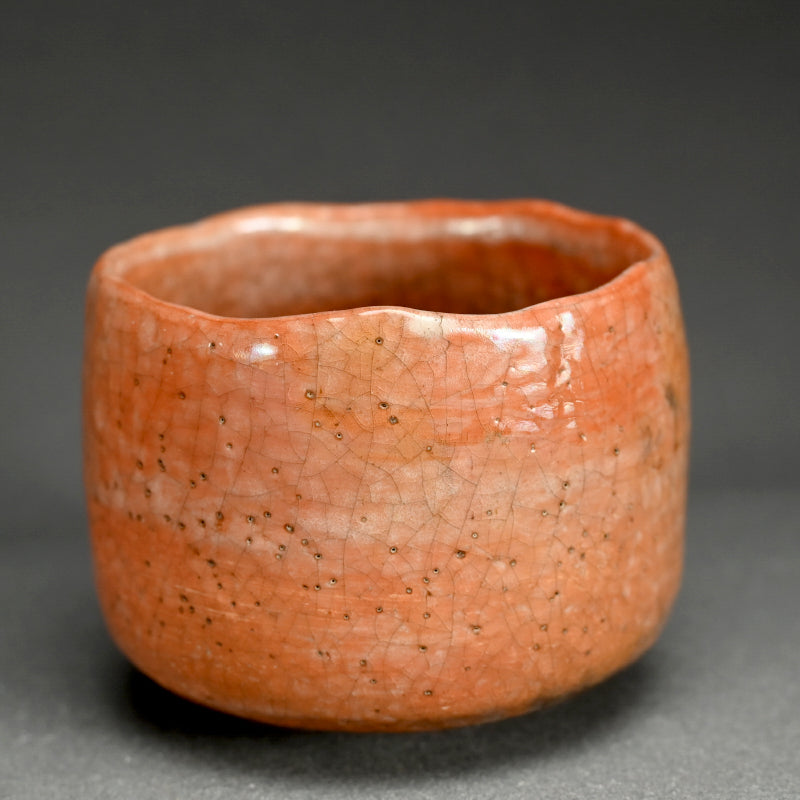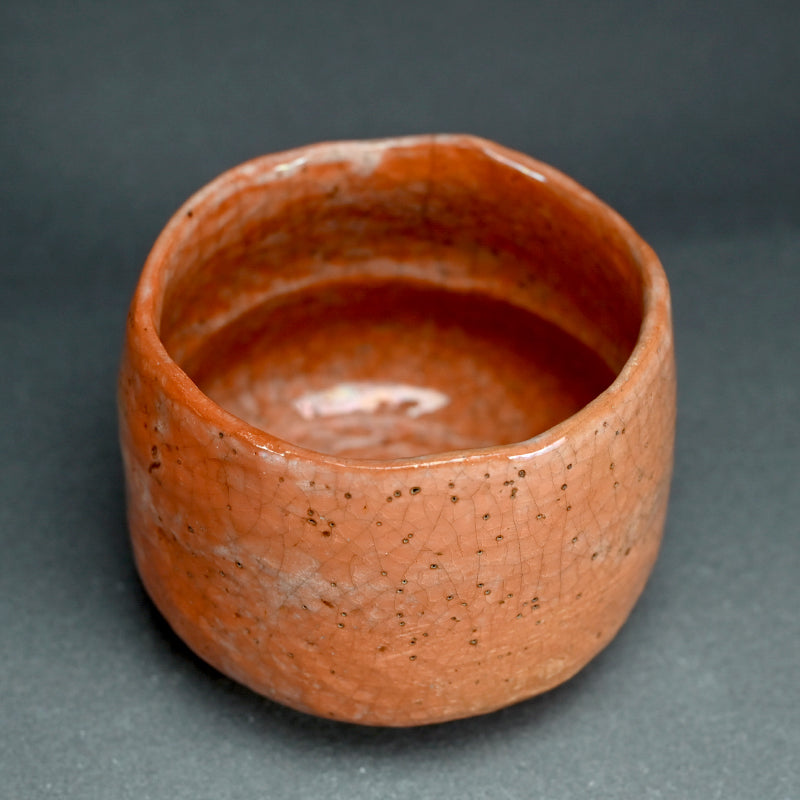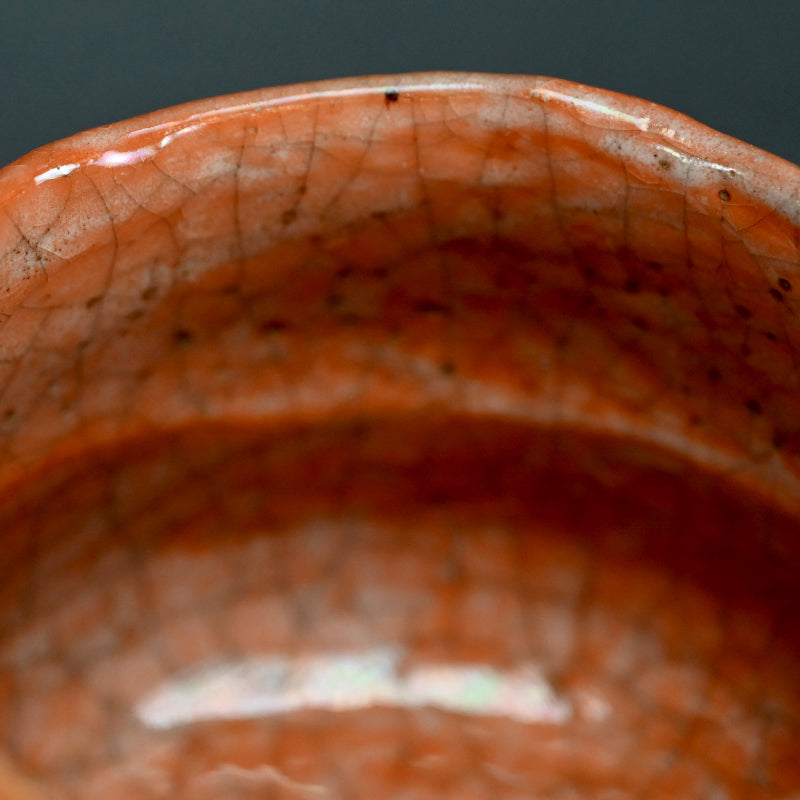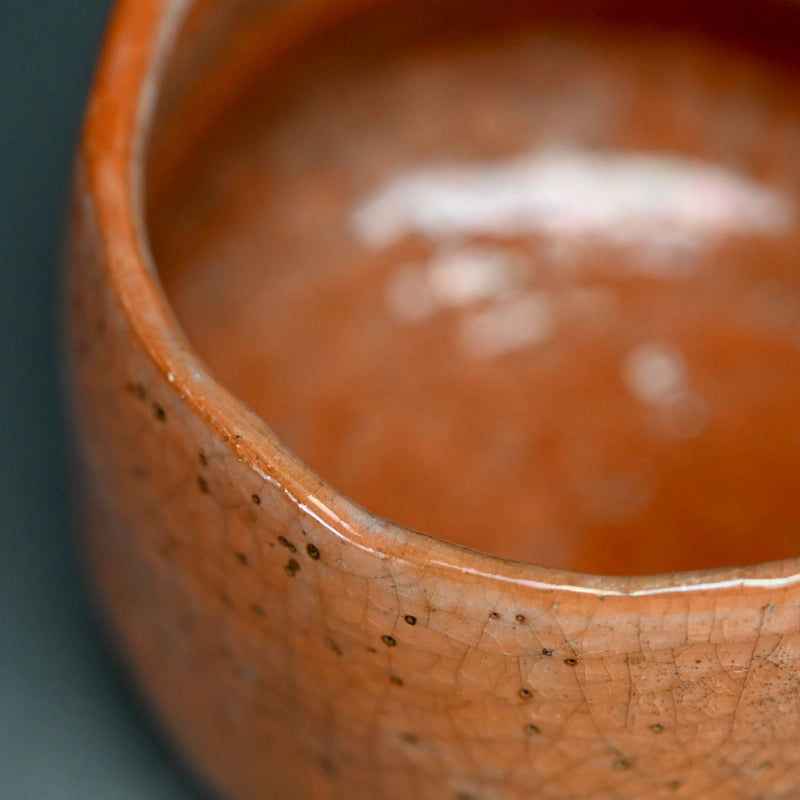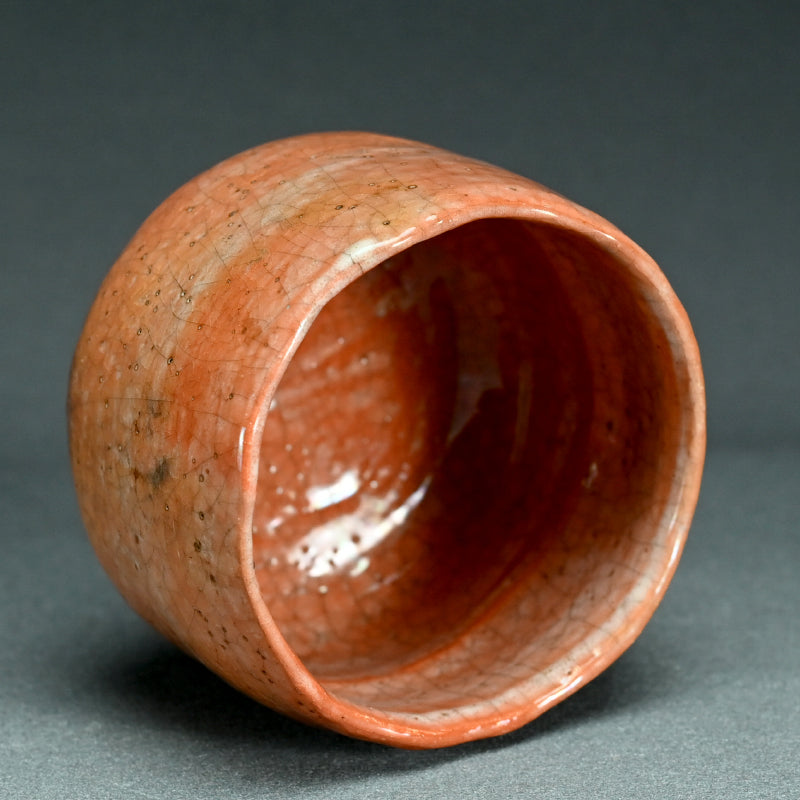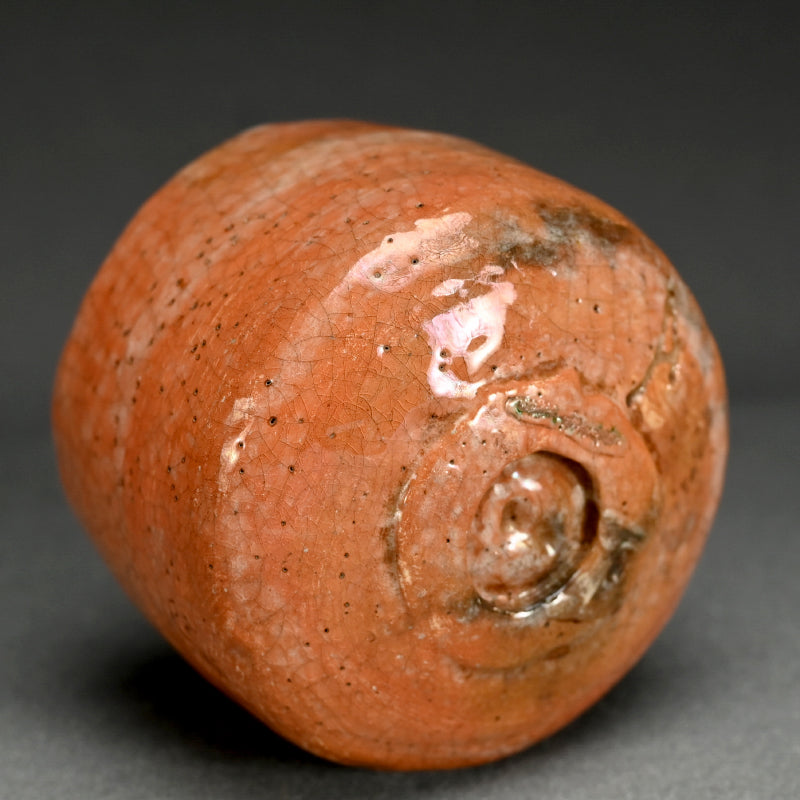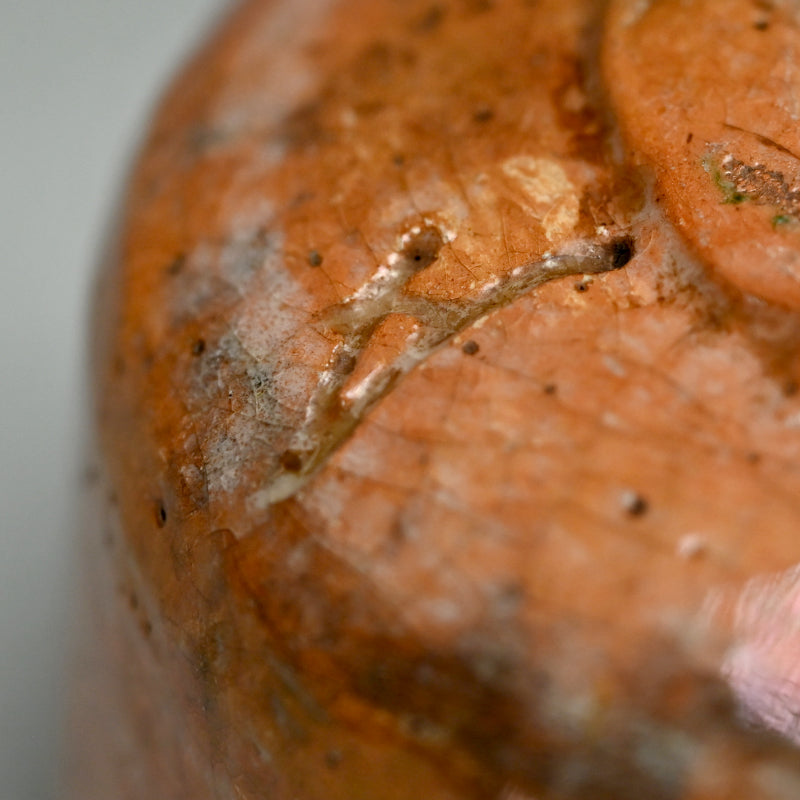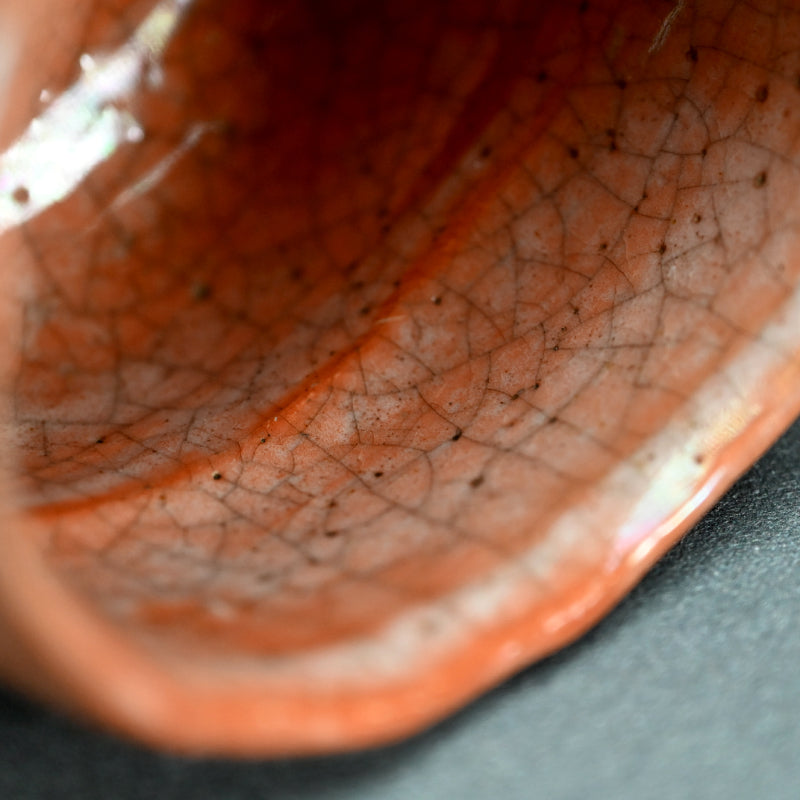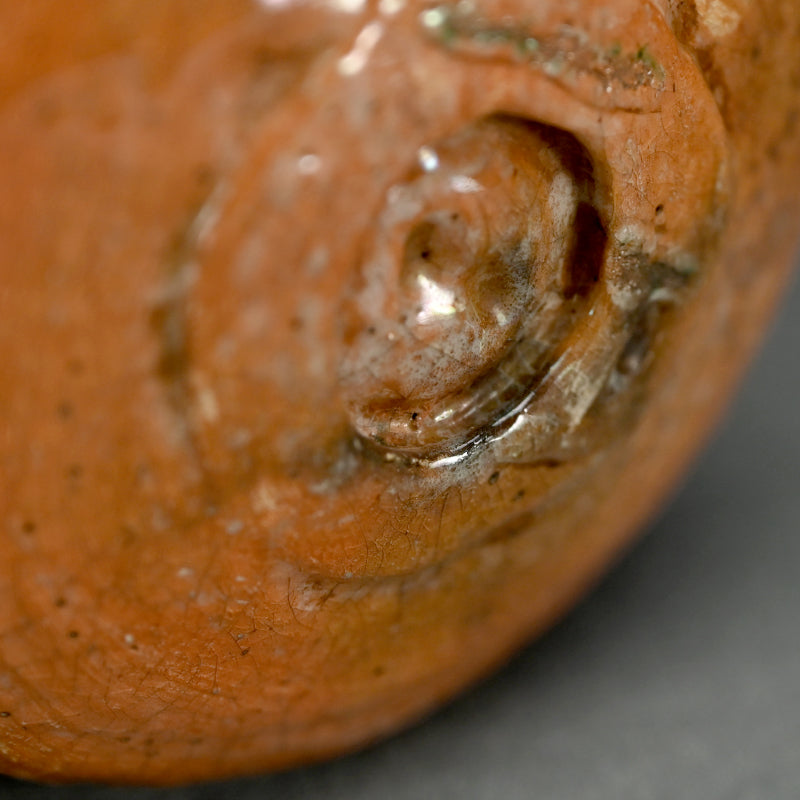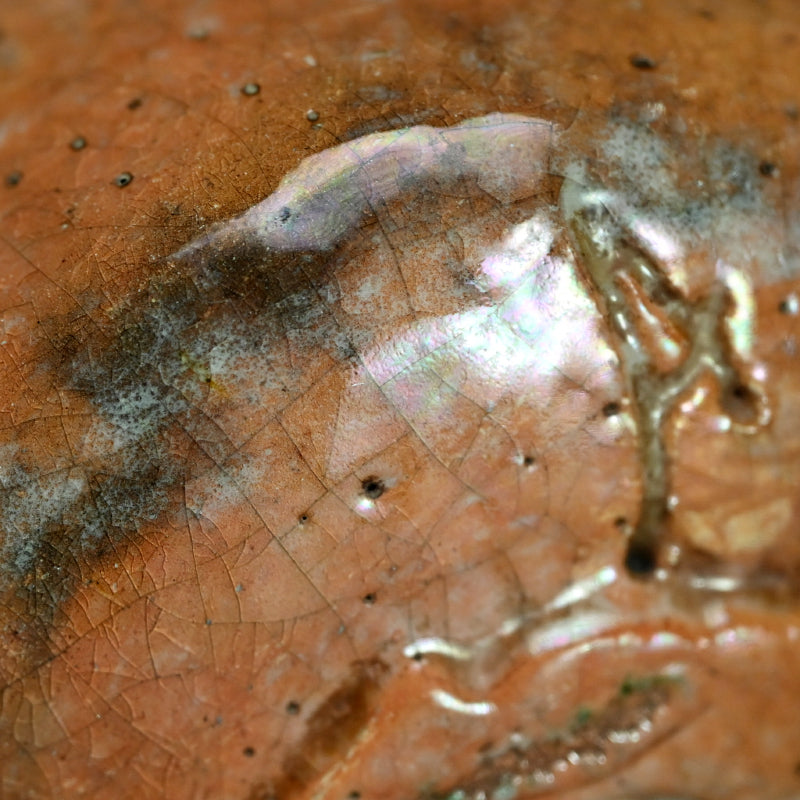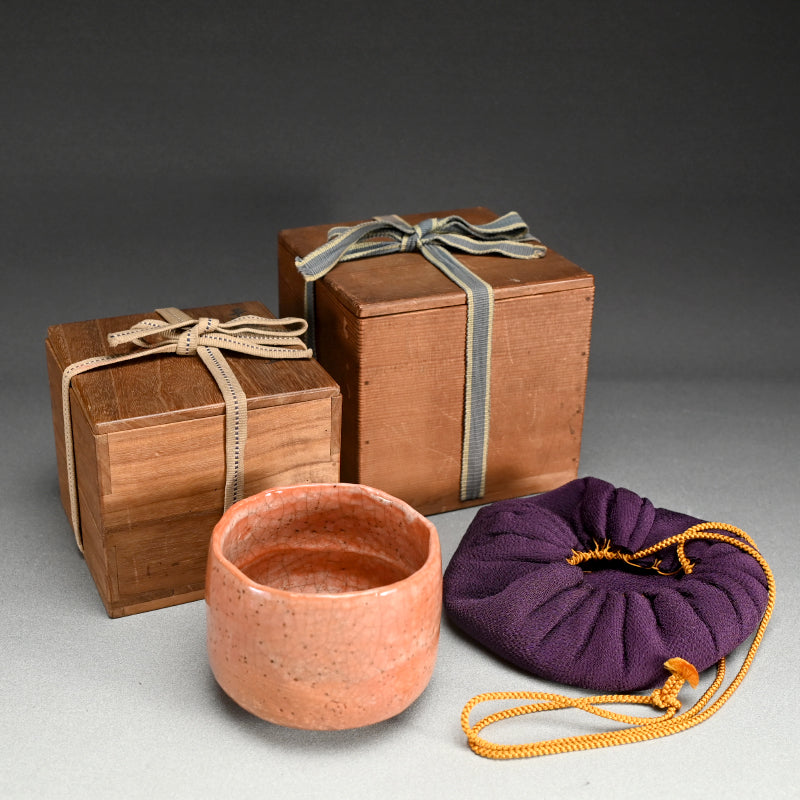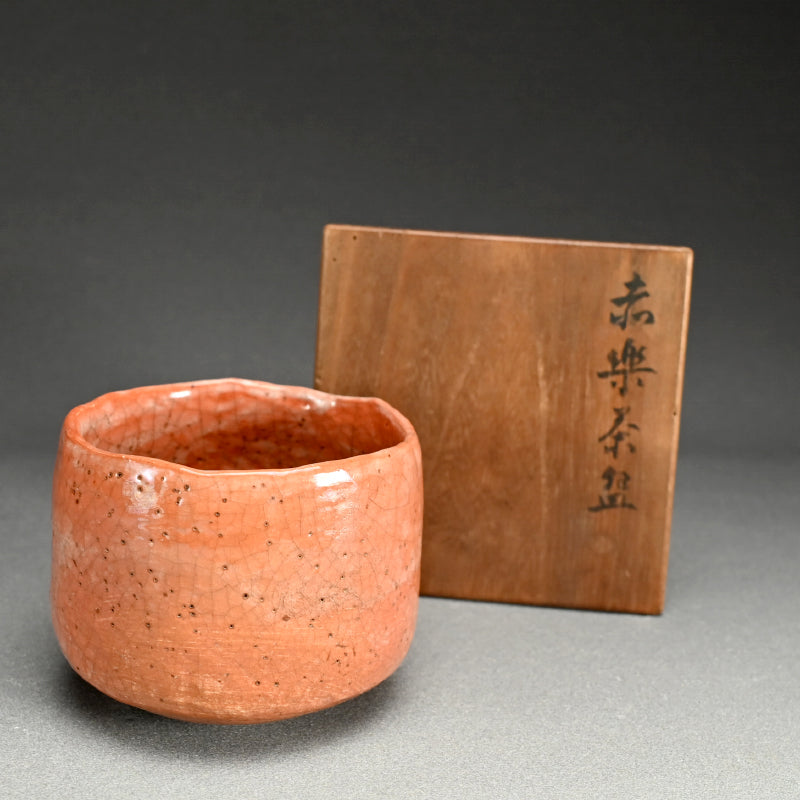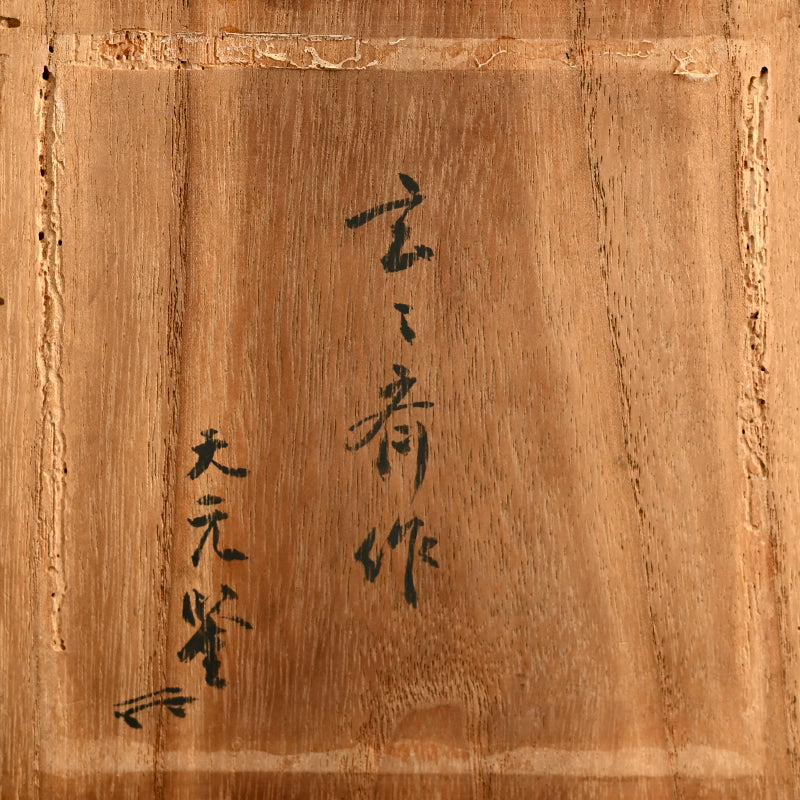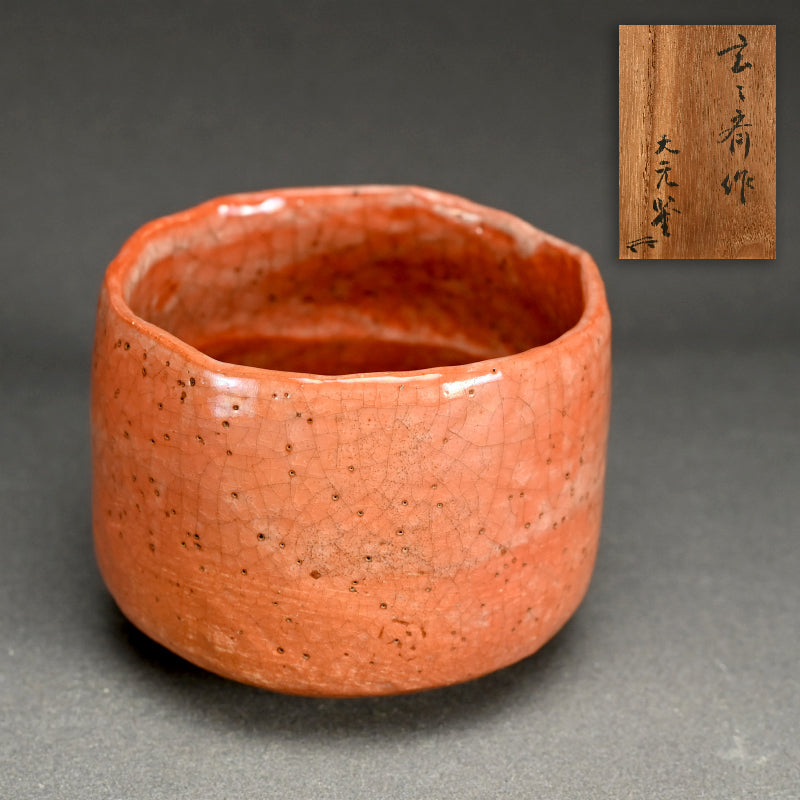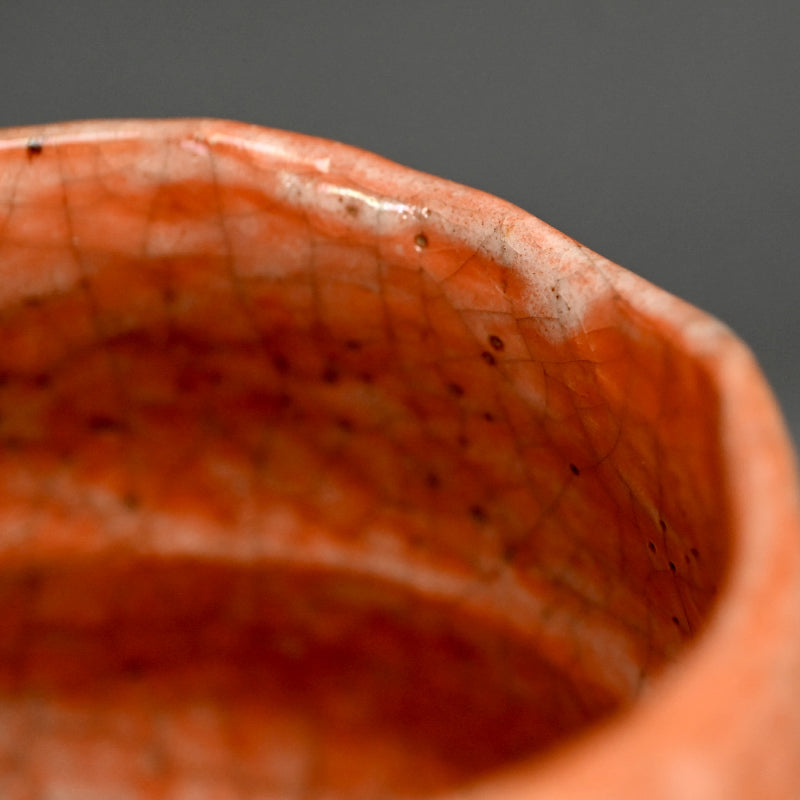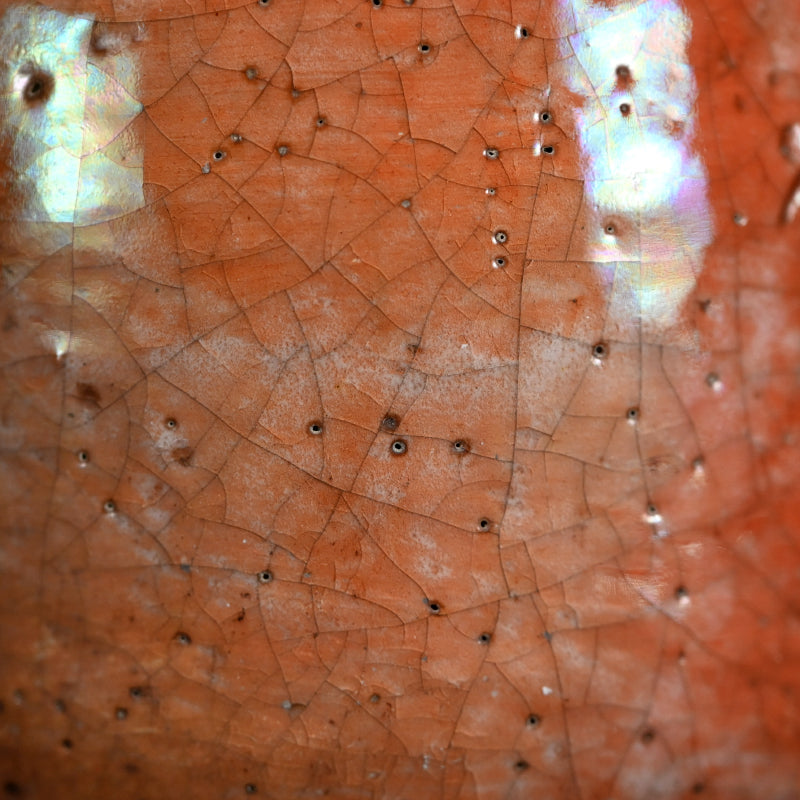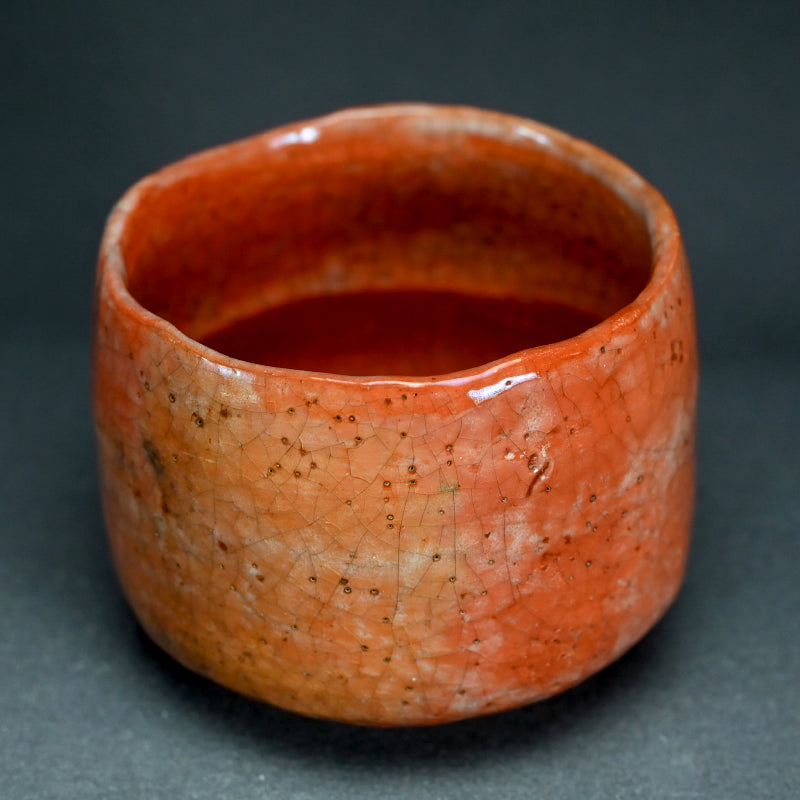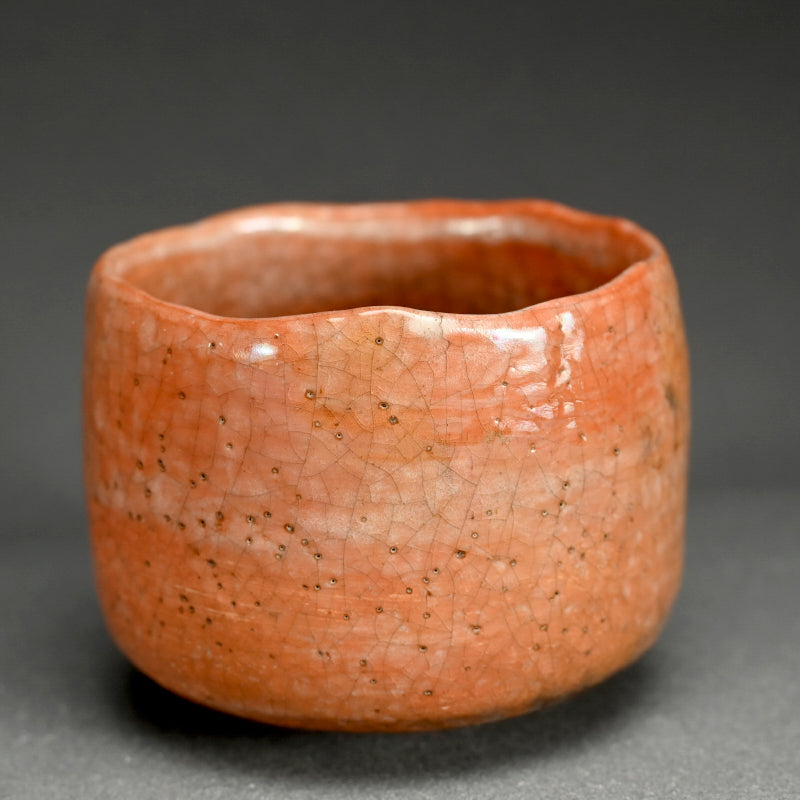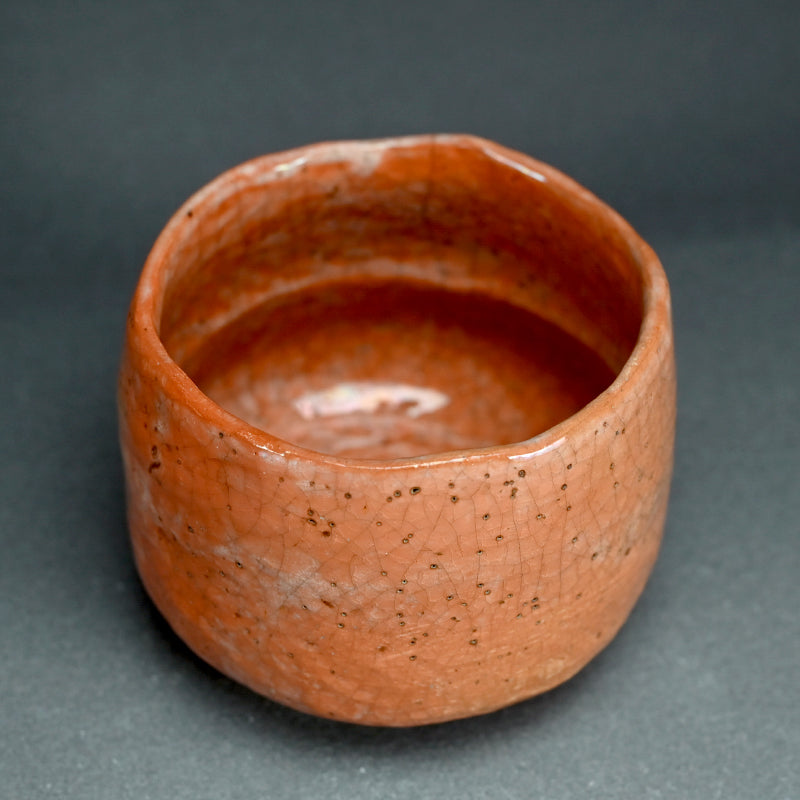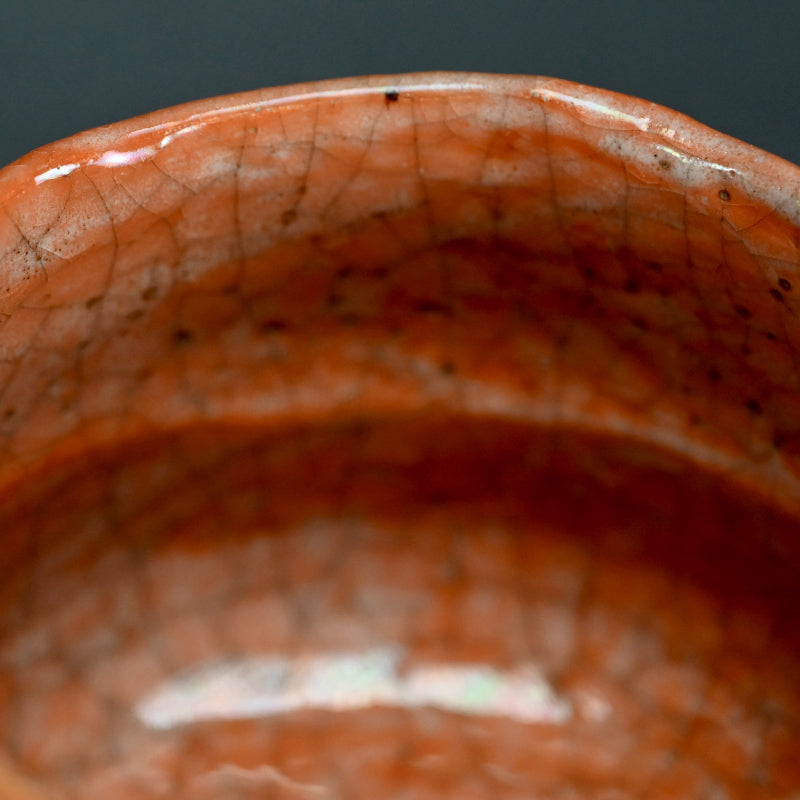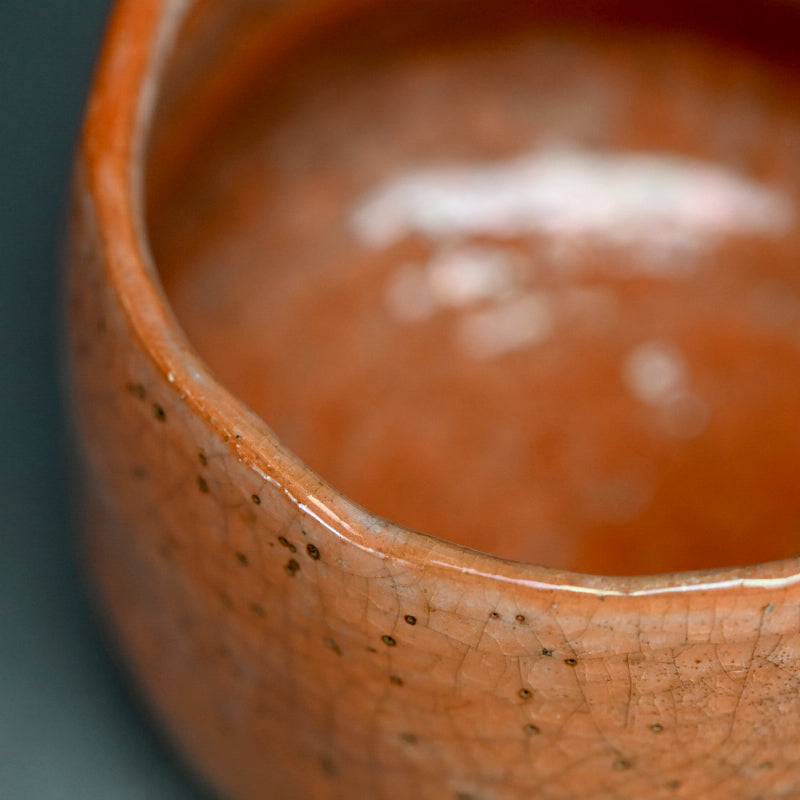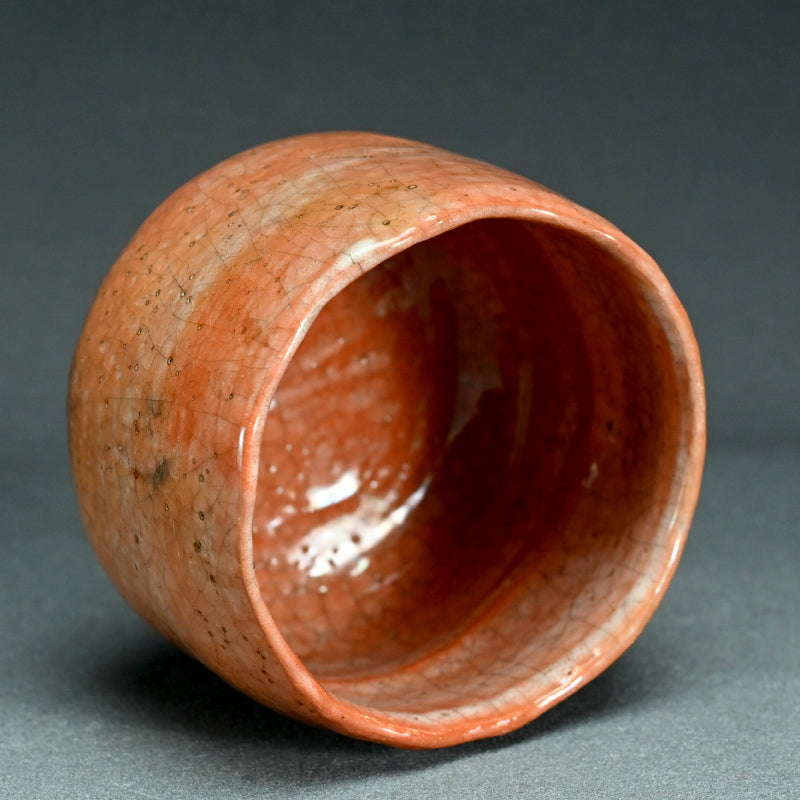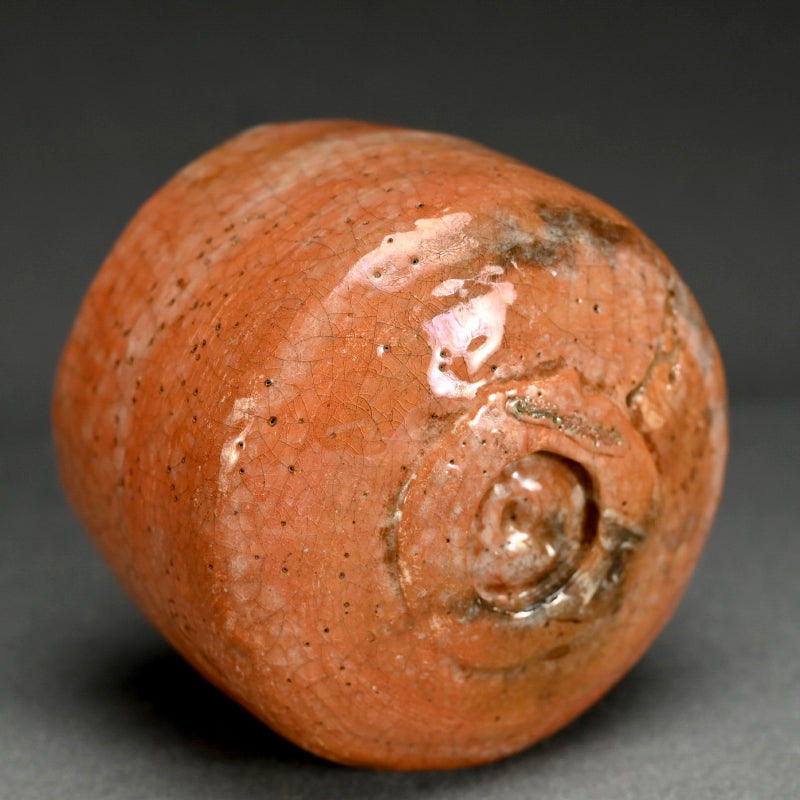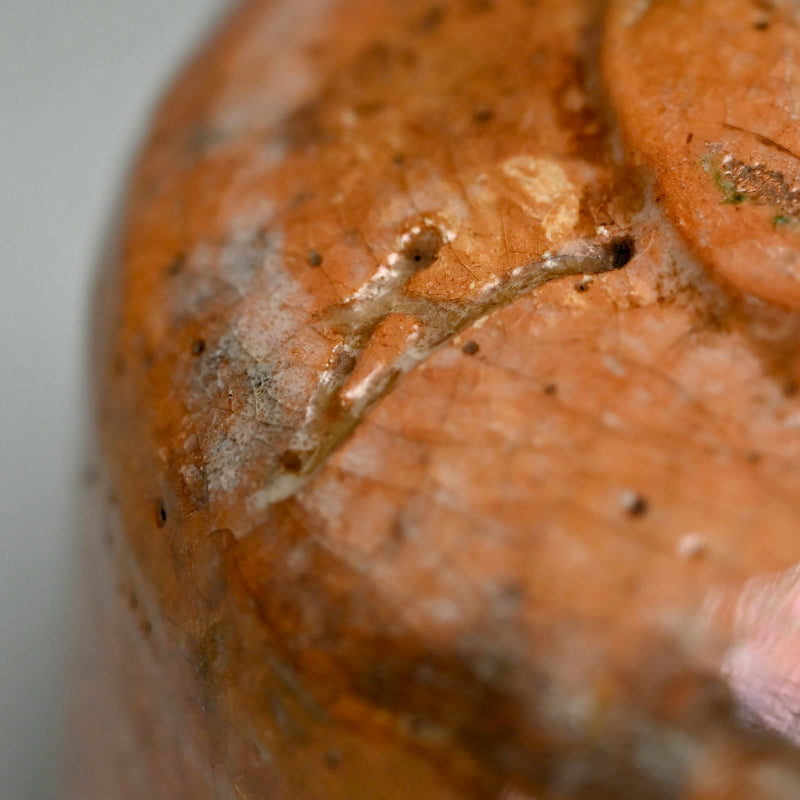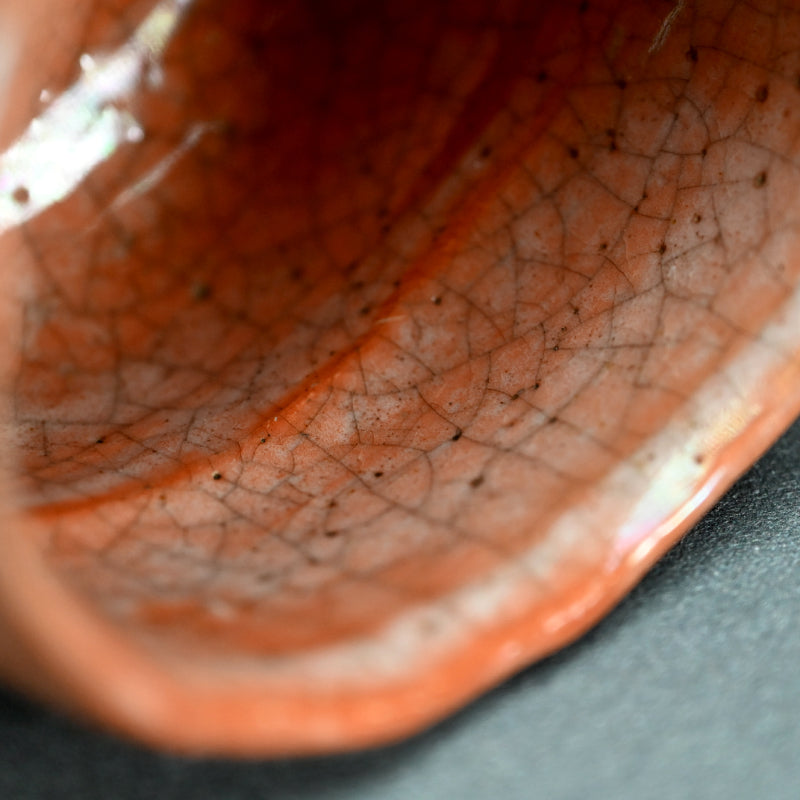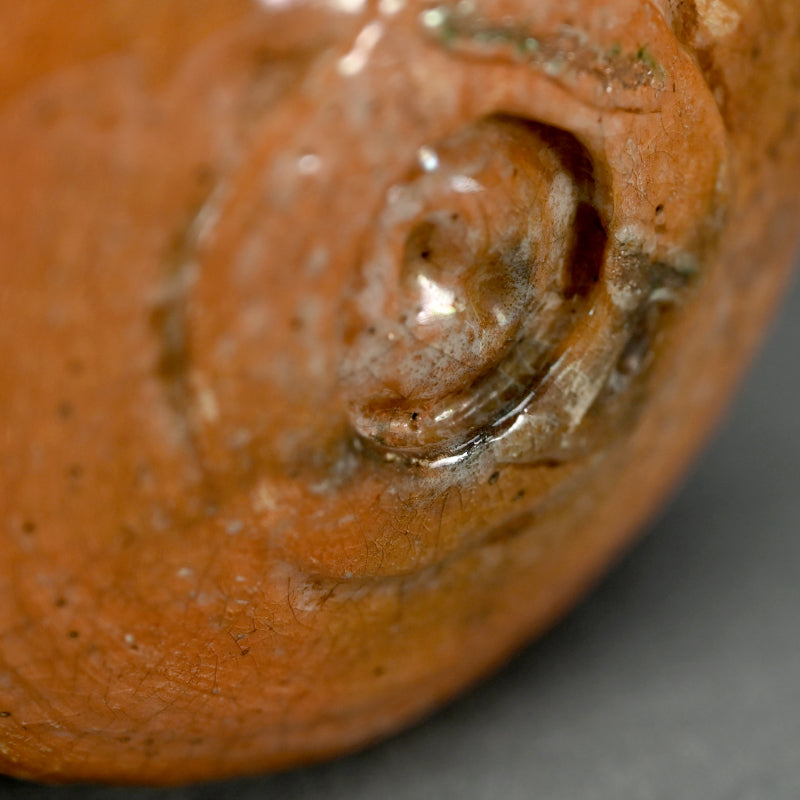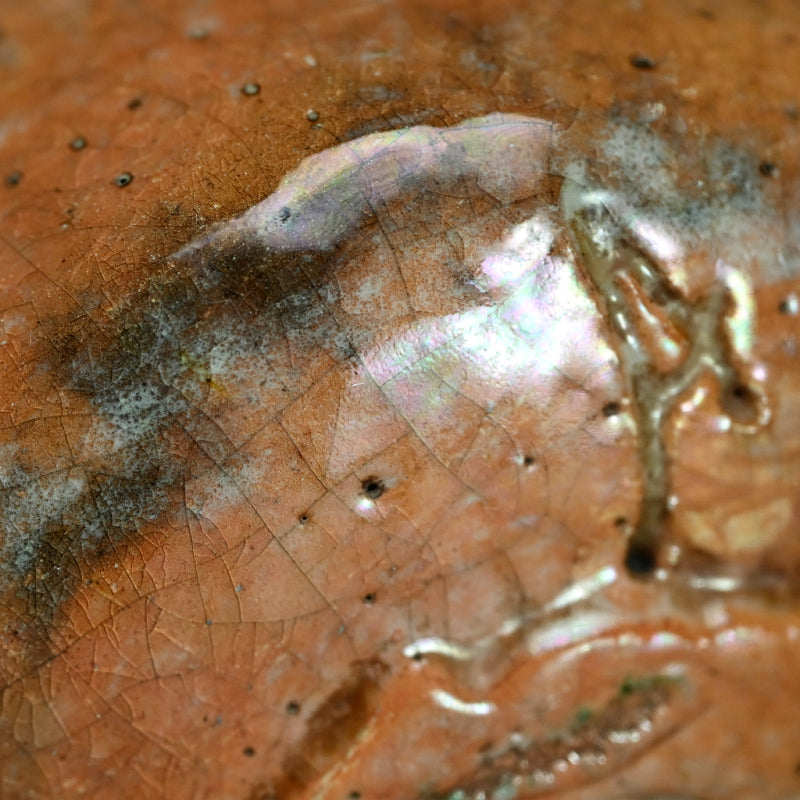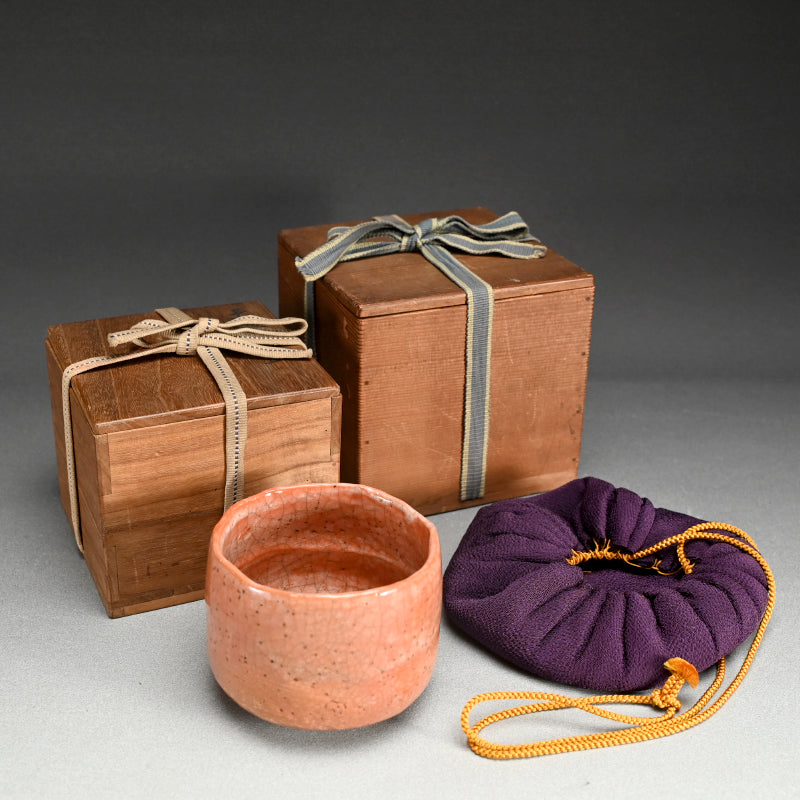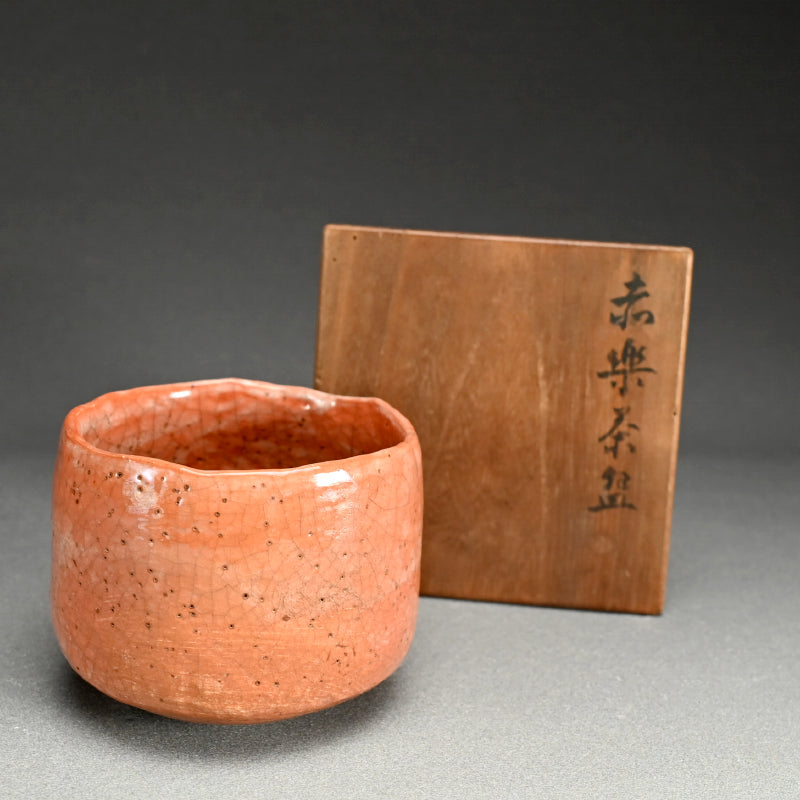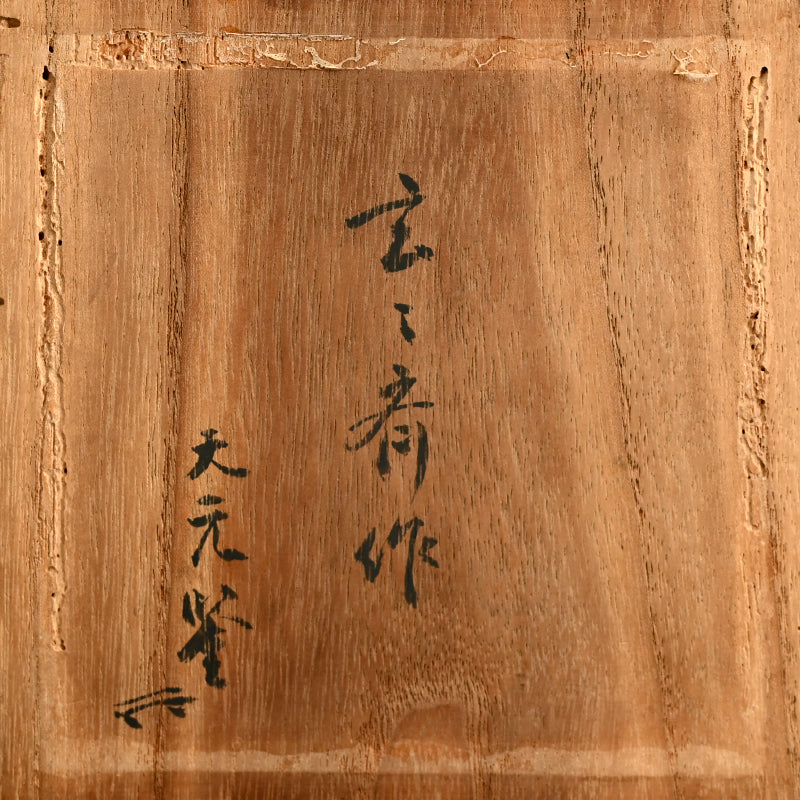Edo p. Aka-Raku Chawan by Tea Master Gengensai ー赤楽茶碗 玄々斎 天元窯
Edo p. Aka-Raku Chawan by Tea Master Gengensai ー赤楽茶碗 玄々斎 天元窯
Item Code: K592
Couldn't load pickup availability
A fabulous deep red Raku Chawan with a barely discernable foot raising it slightly off the surface enclosed in a wooden box accrediting the bowl to Gengensai, 11th generation head of Urasenkei Tea School. The bowl is a masterpiece, with a prominent ridge inside and a slight well forming a perfect chazuri for whipping the tea with the whisk. The artists distinctive Ka-o signature is incised into the base along the Kodai (footring). It is 12 cm (5 inches) diameter, 9.5 cm (just less than 4 inche3s) tall and in excellent condition.
Gengensai Seichu Soshitsu (1810-1877) lived during the years leading into the Meiji Era (1868-1912), a time of dramatic political and cultural change in Japan. This turbulent period saw the collapse of the Tokugawa Shogunate, the move of the emperor from Kyoto to the new capital, Tokyo (until then called Edo), Japan’s all-out adoption of Western civilization, and the country’s development into a modern state. Amid these circumstances, his major achievements included his success in convincing the new Meiji Government that it should officially recognize chado as a serious cultural and spiritual pursuit. Gengensai is also credited as the originator of the ryurei style of chanoyu, which employs tables and stools. Because of his success in maintaining the vitality of chado in the new age, he is often referred to as the Father of the Restoration of Chado. Gengensai was the adopted heir of Nintokusai. His natural father was the 7th-generation head of the Ogyu Matsudaira family, a branch of one of the original Matsudaira lineages from which evolved the Tokugawa family. He was adopted by Nintokusai when he was nine years old and Nintokusai, whose only surviving offspring were girls, was already fifty. Nintokusai, taking into account the daimyo-family background of his new adopted son, saw to it that the boy was educated in the various fields of textbook learning of the time, as well as poetry, music, and other traditional cultural refinements. Nintokusai passed away seven years later, and thus Gengensai became the head of Urasenke when he was only sixteen.
Share
